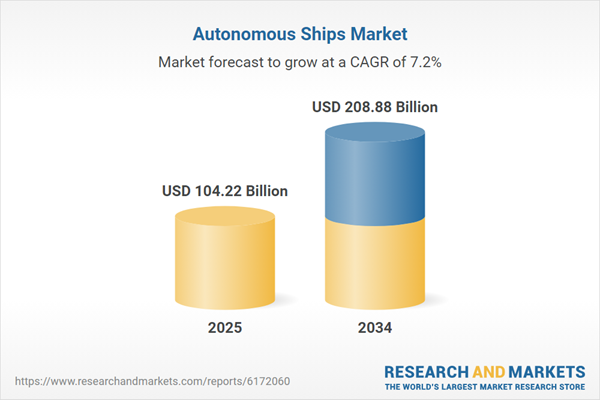Increase in the Demand for Freight Transportation through Marine to Propel Demand in the Industry
There is an increase in demand for cargo transportation via waterways. Because of the safe and secure nature of sea transportation, a large number of cargos are effectively moved to other ports. Additionally, compared to road and air transits, cargo ships are less expensive for delivering products since ships can transport more cargo in a shorter amount of time.This is aiding the market growth of autonomous ships. The autonomous ships industry is expected to grow due to recent advances in commercial boats and big companies' invention of cargo ships. Furthermore, the deployment of autonomous marines, particularly in cargo ships, is projected to increase demand for freight transportation via maritime routes. As a result, all of these factors are expected to contribute to an increase in demand for cargo transportation by sea in the forecast period, thereby aiding the autonomous ships industry.
Autonomous Ships: Market Segmentation
Autonomous ships are watercrafts that are controlled by artificial intelligence (AI). These vehicles might be unmanned and operate automatically, similar to a seagoing drone. Autonomous ships employ a network of sensors paired with sensor fusion to provide an accurate composite view of the environment to the ship's AI.Market Breakup by Level of Autonomy
- Semi-Autonomous
- Fully Autonomous
Market Breakup by Component
- Hardware
- Software
Market Breakup by Ship Type
- Commercial Ships
- Defence Ships
- Passenger Ships
Market Breakup by Fuel Type
- Carbon Neutral Fuels
- Liquefied Natural Gas
- Electric Batteries
- Heavy Fuel Oils (HFO)
Market Breakup by Region
- North America
- Europe
- Asia-Pacific
- Latin America
- Middle East and Africa
Increase in Operational Safety of Ships to Boost the Autonomous Ships Industry
New defence and commercial vessels are outfitted with cutting-edge technologies to increase safety and efficiency. The deployment of sophisticated technologies is a key driver in the market for autonomous ships. As there will be no personnel on board to control the operations of the autonomous ships that are in the market, they will either be outfitted with artificial intelligence, Internet of Things (IoT), cloud computing, and other new technologies, or their activities will be remotely managed from a land-based control centre. This helps to minimise the frequency of accidents caused by human mistake since these autonomous ships are outfitted with modern sensors, infrared cameras, developed radar and LIDAR modules, automated identification systems, and other features that make ship operation safer and is expected to propel the demand for autonomous ships in future.Key Industry Players in the Global Autonomous Ships Market
The report presents a detailed analysis of the following key players in the global autonomous ships market, looking into their capacity, market shares, and latest developments like capacity expansions, plant turnarounds, and mergers and acquisitions:- ABB Ltd.
- L3Harris Technologies, Inc.
- Rolls-Royce PLC
- Wärtsilä
- Others
Table of Contents
Companies Mentioned
The key companies featured in this Autonomous Ships market report include:- ABB Ltd.
- L3Harris Technologies, Inc.
- Rolls-Royce PLC
- Wärtsilä
Table Information
| Report Attribute | Details |
|---|---|
| No. of Pages | 152 |
| Published | August 2025 |
| Forecast Period | 2025 - 2034 |
| Estimated Market Value ( USD | $ 104.22 Billion |
| Forecasted Market Value ( USD | $ 208.88 Billion |
| Compound Annual Growth Rate | 7.2% |
| Regions Covered | Global |
| No. of Companies Mentioned | 5 |









